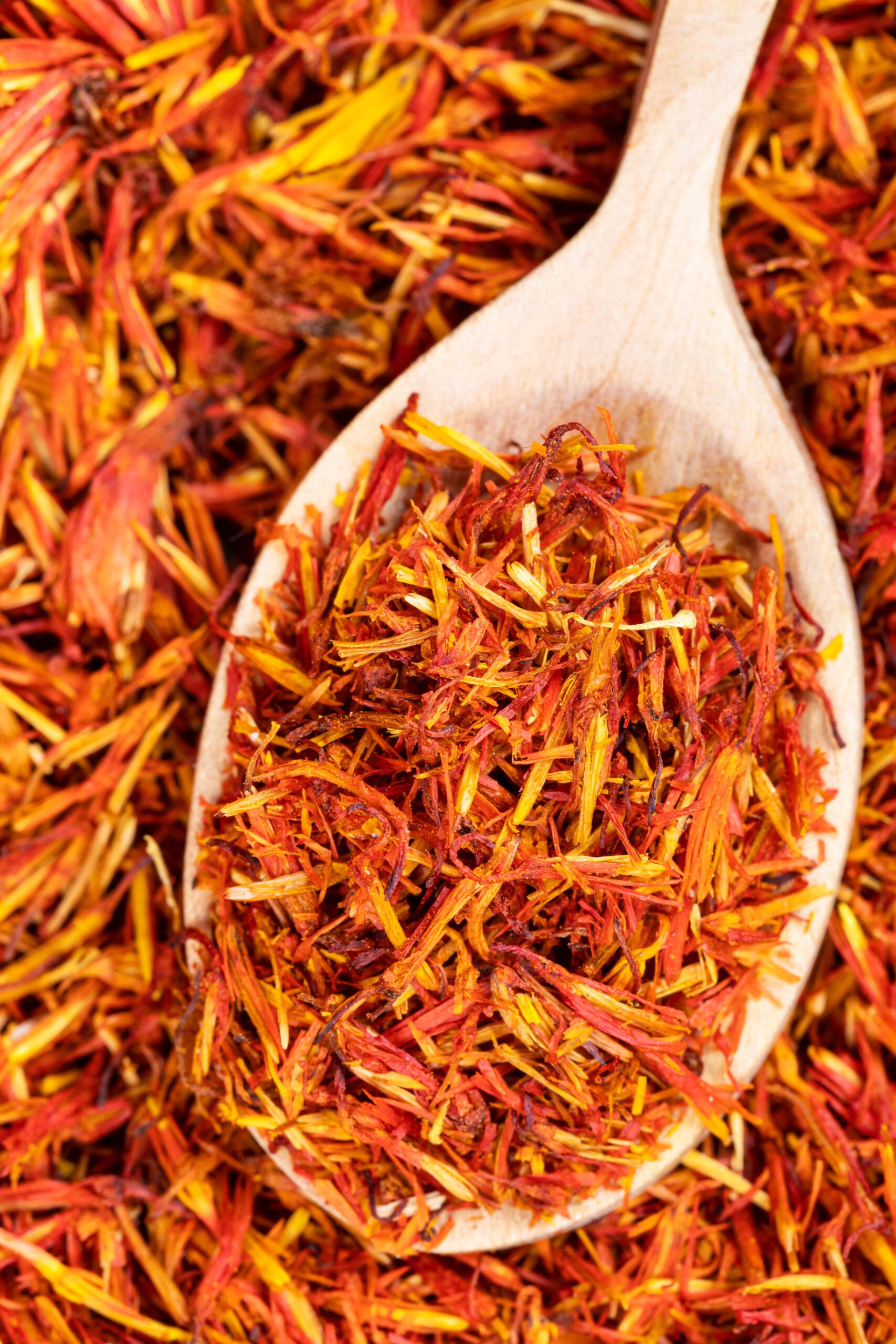
In ancient India, safflower—known as Kusum—was valued for both its color and its practical uses. Its orange-red petals were used in temple lamps, traditional dyes and homemade oils. The plant grew well in dry regions, and its petals were often dried and stored for year-round use.
Families collected and dried the blossoms in open courtyards, where the color deepened in the sun. While the petals have only a mild scent, they were appreciated for their natural coloring ability and for the oil pressed from the seeds, which was used in cooking and medicinal preparations.
Today, safflower is found in many kitchens as a neutral cooking oil or as dried petals used for color. It remains a simple, everyday ingredient with roots in long-standing Indian traditions.
What Is Safflower (Kusum)?
Safflower, or Kusum (Carthamus tinctorius), is a drought-tolerant plant grown mainly in Rajasthan, Madhya Pradesh and other dry parts of India. It is part of the Asteraceae family, which also includes sunflower and marigold.
The plant produces bright orange-red petals that were historically used as natural dyes for textiles and cosmetics. Although often confused with saffron, safflower is milder: it provides color but very little aroma or flavor. Because of this, it is commonly used to add a saffron-like hue to rice, curries and sweets without the intensity or cost of true saffron.
Its seeds are also pressed to make safflower oil, a widely used, neutral-flavored cooking oil. The combination of practicality, availability and gentle coloring is what keeps safflower relevant in modern Indian cooking.
Quick facts
- Hindi / Regional name: Kusum
- Scientific name: Carthamus tinctorius
- Plant family: Asteraceae (same as sunflower)
- Primary growing regions: Rajasthan, Madhya Pradesh, dry northern India
- Used as: Natural coloring ingredient and neutral cooking oil
- Flavor & aroma: Very mild, almost neutral
- Common uses: Coloring rice, curries, sweets and press for oil
- Often compared to: Saffron (for color only, not flavor)
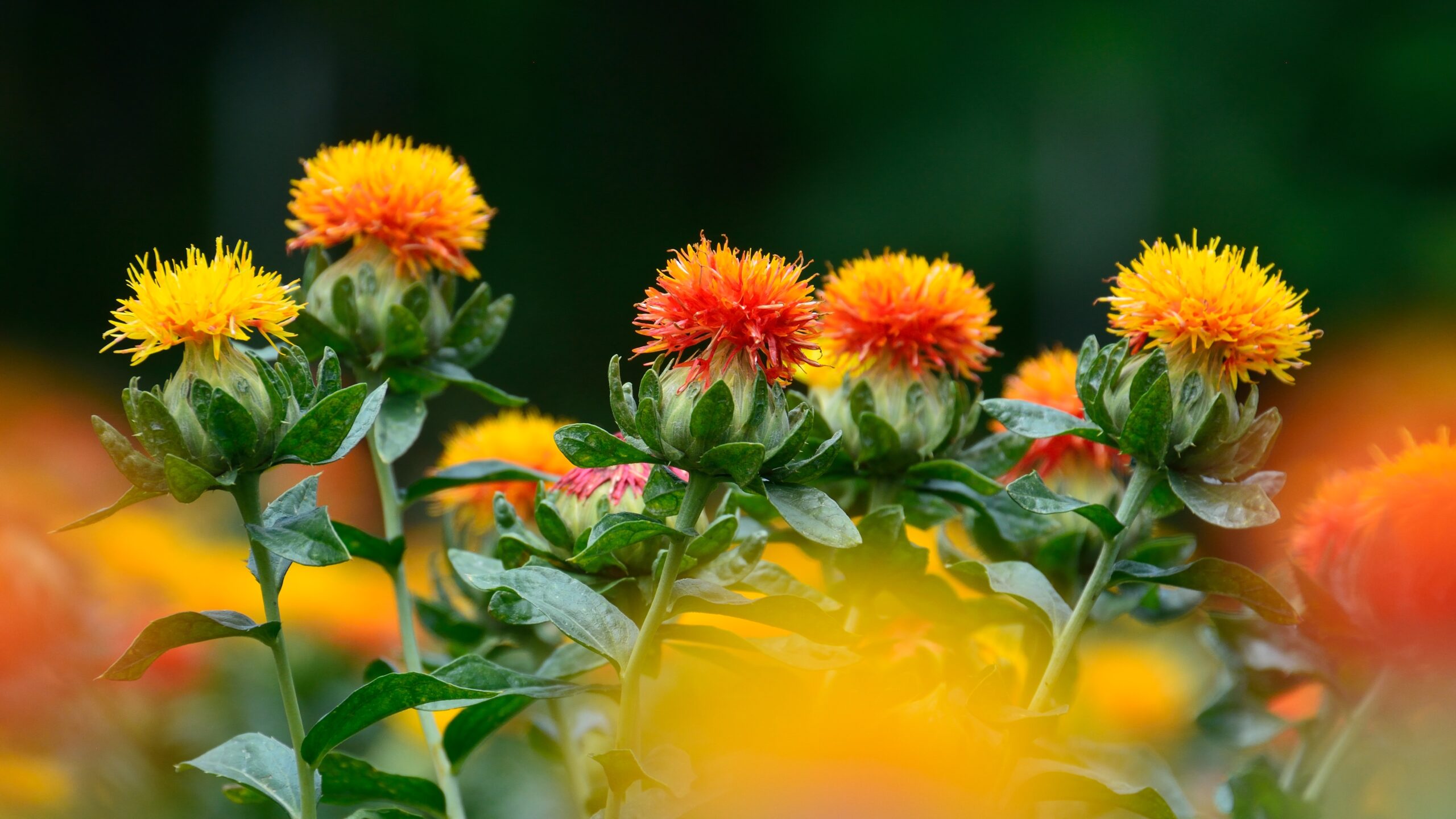
The Drying and Processing Method
Safflower petals are collected when they reach full color. Traditionally, they are spread out in a single layer and air-dried in shade or gentle sunlight to prevent fading. Once fully dry, the petals can be stored for later use as a natural coloring ingredient or for herbal preparations.
The seeds are separated and cleaned before oil extraction. In many regions, cold-pressing is used to produce safflower oil, which helps retain its neutral flavor and nutritional profile. Large-scale producers may use controlled drying and mechanical extraction to ensure consistency and quality.
Overall, the process is straightforward: fresh petals for color, dried petals for storage, and seeds pressed into cooking oil. This simple workflow is what keeps safflower practical for both home kitchens and commercial production.
Forms You’ll Find It In
You’ll find safflower in two main forms — each serving a distinct purpose.
-
Dried petals: Used as a natural color in foods, herbal teas, and traditional dyes, the golden-red petals are often called ‘poor man’s saffron.
-
Safflower oil: A light, neutral oil ideal for cooking, skincare, and Ayurvedic massage.
-
Capsules: Modern shelves may also carry safflower capsules or extracts, popular in wellness blends for their heart and skin benefits.
Whether as a flower, oil, or supplement, Kusum continues to color life in quiet, nourishing ways.
Flavor Profile
Safflower has a very mild taste with light earthy notes. The dried petals are mainly used for their natural red-orange color and bring only a subtle flavor to food. Safflower oil is neutral and smooth, which makes it a good base for cooking where other spices and ingredients provide the main character. It supports the dish rather than adding a strong taste of its own.
How to Identify Pure Safflower
-
Petal texture: Look for light, soft petals with gentle curls and uneven shapes, pure safflower is never flat or uniform.
-
Color tone: Genuine petals range from golden yellow to deep orange; avoid overly bright or perfectly colored ones.
-
Water test: Soak a few petals in warm water, real safflower releases a soft golden tint, not a strong red or orange stain.
-
Oil appearance: Pure safflower oil has a pale golden color and smooth, neutral scent; overly clear or strong-smelling oils are often refined or blended.
-
Packaging and source: Choose cold-pressed or unrefined oil from reliable producers and look for origin details on the label.
Culinary Uses Across India and Beyond
In India:
Safflower oil is common in Maharashtrian and Gujarati kitchens, where its light texture suits everyday frying and tempering. Dried petals color rice, lentils, and sweets such as kheer, adding a golden warmth when saffron is scarce.
In Southeast Asia:
In parts of Thailand and Indonesia, safflower petals appear in herbal soups and spice pastes. Blended with lemongrass, galangal, or turmeric, they add light color and mild flavor to soups and marinades.
In the Middle East and Mediterranean:
Cooks use safflower to add natural color to curries, rice, and teas. Its mild, stable oil works well in salads, baking, and light frying.
Today:
Today, chefs and home cooks are turning back to safflower for its gentle color and balanced nutrition, adding a quiet touch of warmth and wellness to modern meals.
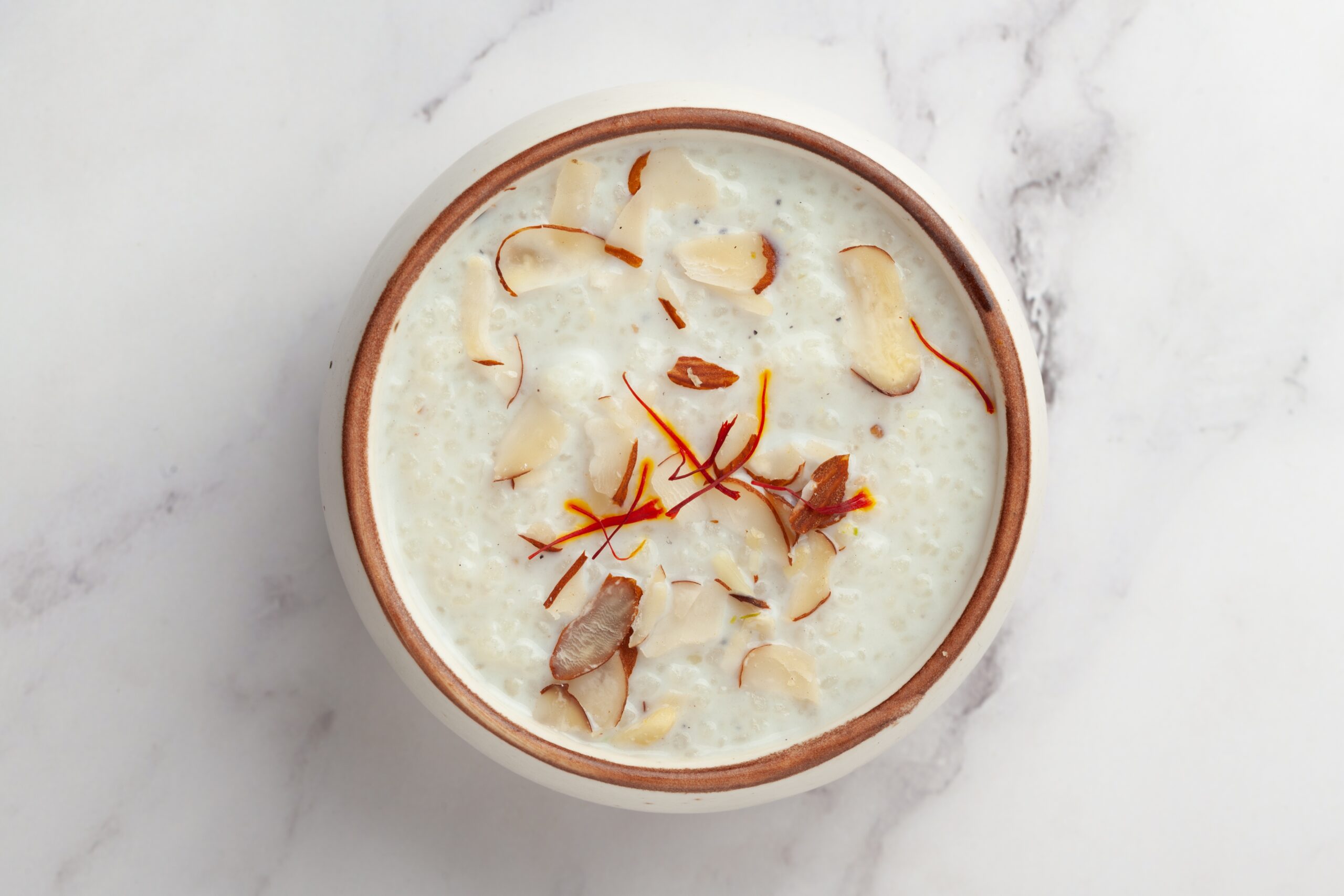

Creative Ways to Use Safflower (Kusum)
-
Infuse oils: Warm safflower petals in oil with garlic or herbs to make a flavorful topping for salads or roasted vegetables.
-
Brighten rice and grains: Add a pinch of petals to basmati rice while cooking for a soft golden tint and warmth.
-
Enhance teas and drinks: Blend petals with lemongrass, green cardamom, or ginger for light floral touch that soothe and refresh.
-
Flavor light soups: Stir in dried petals at the end of cooking to add color and a gentle earthy note to broths or soups.
-
Experiment in baking: Use safflower oil instead of butter and ghee in muffins, cakes, or breads for a lighter texture and mild flavor.
-
Finish with color: Sprinkle crushed petals over savory dips, hummus, or creamy curries for a touch of golden contrast.
Flavor Pairings
-
Spices: Blends gently with cumin, coriander, turmeric, and fennel for balanced, earthy depth.
-
Aromatics: Complements ginger, garlic, and mild chilies without overpowering them.
-
Herbs: Pairs beautifully with mint, basil, or cilantro in light, refreshing dishes.
-
Citrus and fruits: Works well with lemon, orange peel, or mild tropical fruits in dressings and teas.
-
Grains and lentils: Adds warmth and color to basmati rice, quinoa, moong dal, or khichdi.
-
Nuts and seeds: Matches the mild nuttiness of almonds, cashews, and sesame for smooth, rich blends.
Together, these flavors let Kusum shine quietly; adding light, color, and calm to every meal.
Quick Tips to Get the Best Out of Safflower (Kusum)
-
Add near the end: Stir safflower petals into dishes just before serving to keep their golden hue bright.
-
Use low heat: Warm safflower oil gently, high temperatures can dull both flavor and nutrients.
-
Pick cold-pressed oil: It holds more natural richness and aroma than refined varieties.
-
Pair thoughtfully: Combine safflower oil with mild spices or herbs like cumin, coriander, or mint.
Handled with care, safflower turns simple meals into quiet expressions of warmth and wellness.
Substitutes
If safflower isn’t available, a few close substitutes can bring similar color and gentleness to your cooking.
-
Turmeric: Adds a rich golden color but with a stronger, more earthy taste.
-
Marigold petals: Provide a light yellow tint, ideal for teas or rice dishes.
-
Sunflower oil: Neutral and light, it works well in frying and everyday meals.
-
Canola oil: Smooth and mild, perfect for salads and gentle sautéing.
Nutritional Value (Per Teaspoon – Approx. 2g)
Safflower oil is valued for its lightness and heart-friendly fats. A single teaspoon provides essential nutrients that support daily wellness.
-
Calories: 18 kcal
-
Total Fat: 2 g
-
Omega-6 Fatty Acids (Linoleic Acid): 1.5 g
-
Vitamin E: 0.6 mg
-
Cholesterol: 0 mg
-
Carbohydrates, Protein, Sodium: 0 g
Health Benefits
Safflower may not boast bold flavor, but it carries quiet strength in every drop. Its oil and petals are prized in both modern nutrition and traditional wellness for their gentle yet steady effects on the body.
-
Supports heart health: The high content of unsaturated fats may help reduce bad cholesterol levels and improve circulation (Source).
-
Nourishes the skin: Safflower oil can enhance skin hydration and maintain elasticity, often used in natural skincare blends (Source).
-
Aids metabolism: Its linoleic acid content may help the body use fat more efficiently, supporting balanced energy levels (Source).
-
Soothes inflammation: In Ayurvedic and modern studies, safflower may reduce mild inflammation and promote joint comfort (Source).
-
Balances digestion: A small amount of safflower oil can encourage smooth digestion and improve nutrient absorption (Source).
Potential Health Risks
While safflower is generally safe, mindful use matters especially when taken in concentrated or supplement form.
-
May thin the blood: Safflower oil can slow clotting, so it should be avoided by those taking blood-thinning medication or before surgery (Source).
-
Can cause allergic reactions: People sensitive to members of the sunflower family may experience mild itching or irritation (Source).
-
May lower blood pressure: Excessive intake can intensify the effects of blood-pressure medications (Source).
-
Can upset digestion: Large quantities may lead to loose stools or stomach discomfort (Source).
-
Not advised during pregnancy: In traditional medicine, safflower petals are sometimes avoided as they may stimulate uterine activity (Source).
How to Store It Right
Safflower stays at its best when kept cool, dry, and protected from light.
-
For petals: Store in an airtight glass jar away from sunlight and moisture. Their color fades quickly when exposed to air or heat.
-
For oil: Keep in a tightly sealed bottle in a cool, dark place. Avoid plastic containers that can alter the oil’s taste over time.
-
Shelf life: Dried petals last up to a year, while unopened safflower oil keeps for about 8 to 10 months. Once opened, use it within 3 months for the freshest flavor and nutrients.
Safflower for Skin and Hair Care
Safflower oil’s light texture and nutrient-rich composition make it perfect for both skin and hair wellness.
-
Moisturizes deeply: Its linoleic acid helps retain softness and hydration without leaving residue.
-
Improves skin texture: Vitamin E may support elasticity and reduce dryness or flakiness.
-
Soothes irritation: Gentle enough for sensitive skin, it can calm redness and roughness.
-
Nourishes the scalp: Promotes circulation that may encourage healthy hair growth.
-
Adds shine and smoothness: A few drops in hair masks or post-wash treatments can soften strands naturally.
-
Pairs with herbal blends: Often blended with turmeric, rosewater, or amla in traditional beauty.
Cultural Significance in Indian and Ayurvedic Traditions
Safflower has been used in India for centuries as a practical and versatile plant. Its petals were historically used as a natural dye for clothing, textiles and ceremonial items. In some regions, the dried petals and oil were also part of household and ritual practices because of their warm color and ease of use.
In Ayurveda, safflower oil is considered light and supportive for the body. It is commonly used in cooking and is sometimes applied in massage to help soften skin and support circulation. The oil’s neutral nature makes it suitable for both everyday meals and simple self-care routines.
Final Thoughts
Safflower remains a useful ingredient in Indian kitchens and traditional practices. The petals provide natural color, and the seeds offer a mild cooking oil that works well with a variety of dishes. Its long history reflects how simple ingredients can serve many roles—from food to textiles to wellness.
Even as methods have modernized, safflower continues to support daily life in quiet, practical ways.
FAQs
What is safflower used for in cooking?
Safflower oil is used for cooking, frying, and in salad dressings, while its dried petals naturally color rice, soups, and teas.
Is safflower the same as saffron?
No. Safflower only mimics saffron’s golden color but lacks its aroma and flavor, making it an affordable coloring alternative rather than a substitute in taste.
Can safflower oil be used on the skin?
Yes. Its high Vitamin E and linoleic acid content can help moisturize, smooth, and protect the skin when used regularly.
Does safflower oil help with hair growth?
It may support healthy hair growth by improving scalp circulation and keeping hair soft, hydrated, and shiny.
How should safflower petals be stored?
Keep them in an airtight container away from sunlight and moisture to preserve their color and potency.
Is safflower safe for daily use?
Yes, in moderate amounts. However, people on blood-thinning medication or with allergies to sunflower family plants should consult a doctor before use.
Learn More About Safflower (Kusum)
Wikipedia – Safflower
A short, engaging article highlighting the traditional and modern uses of safflower (Carthamus tinctorius). It covers its role as an ancient crop valued for its golden dye, edible oil, and medicinal properties, its health benefits, such as supporting heart health and reducing inflammation, along with precautions like possible allergic reactions or overconsumption risks.


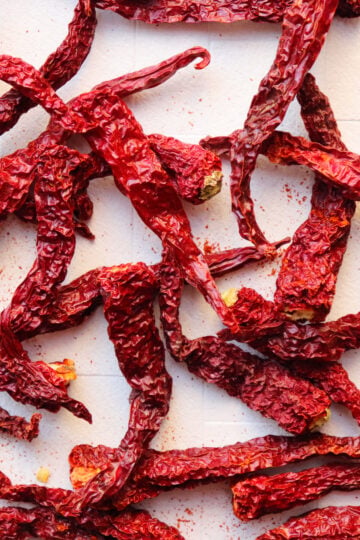
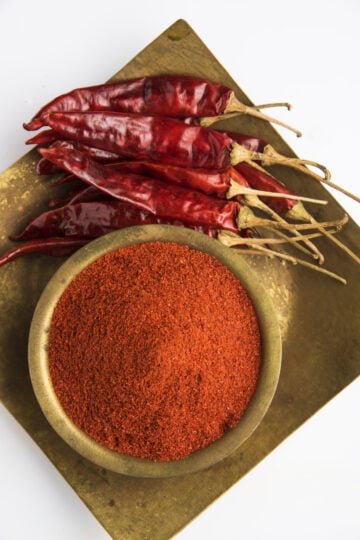
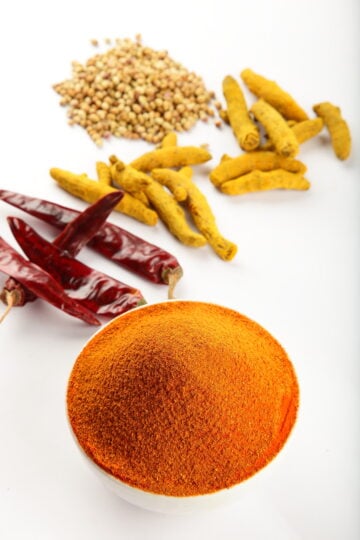
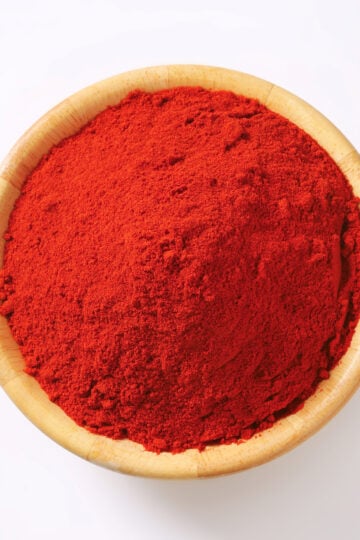
Have a question or something to share? Leave a comment below!